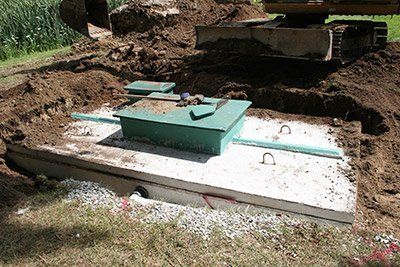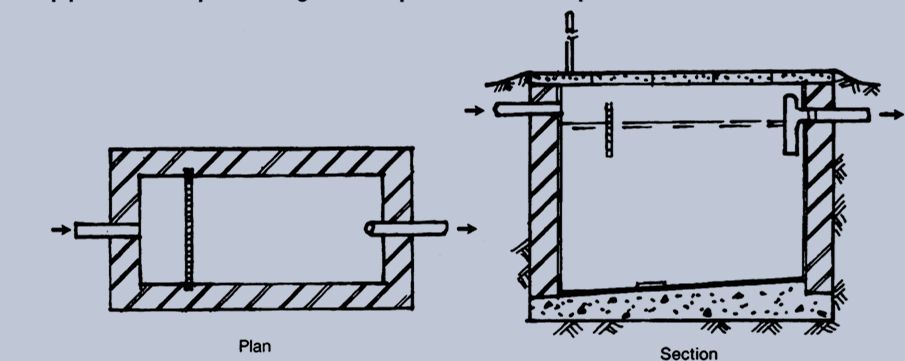How Do Septics Work
What's Next For Septic Tank Technology?Rural areas aren't always equipped with sewage lines. This means you will require an individual water treatment facility to treat and dispose of your wastewater. It is vital that those who live in smaller areas or houses who don't have access to on-site disposal facilities put in one prior to any other homeowner will. There are various types of home septic tanks available but they all essentially do the same thing, which is to take away the waste that we produce from our homes and filter out unwanted substances before discharging pure water into the surface waters where required. The majority of costs are based on capacity and size requirements- larger ones being better able to limit the amount of tasks are required due to the lesser amount of liquid being produced per day than smaller models require.
How Much Does An Septic System Run?
The traditional septic tanks are an old system that's not working effectively today. It could cost between $2,500 and $5K in the United States without considering permits. This is not counting the cost of pipe your drain field or test soil. If cost isn't your primary concern, then you need to think about different types of anaerobic and aerobic septic systems. These modern machines are known as "septic systems" and they can be bought. These are costly at first but they last for many decades and don't require maintenance.
Aerobic systems use oxygen to accelerate the process of breakdown and create a cleaner water than other options. In fact, you could utilize this water for irrigation purposes when there's no other source. Anaerobic foods also take less space since it requires approximately half of the surface area to leach as opposed to traditional systems. However, it does come with the cost of approximately 13 thousand dollars per 1,000 gallons processed through treatment tanks each year. Have a look at the best septic system how it works for info.

What Does It Cost To Set Up An Tank For Septic?
The most affordable and light option is polyethylene or plastic septic tanks. A typical price for a 1,000-gallon tank is about 11 hundred dollars. However, they may leak when pressure is applied to them in some US states. This ban has been in response to damaged tanks. This can lead to expensive repairs and compromise the money you saved on your initial installation price. The reliable concrete septic system is an extremely durable and long-lasting option. Although these tanks can crack, they are not likely to cause severe damage. But, it's important to note that this tank comes with a higher initial cost of about twelve hundred dollars for 1,000 gallon. Fiberglass tanks are a desirable option for homeowners looking to save money, and can be installed easily. They are much lighter than concrete and plastic tanks that can be tricky to install in a small space. This makes it easier for lesser weight to be put on your home which leads to better quality construction.
What Does This All Mean For Me?
It isn't easy to grasp all the elements that influence your septic tank costs. Understanding the options available to you for installation and the cost of each is a crucial factor to consider when making this choice. NexGen Septics has done all the legwork for you! We give detailed explanations about everything, from soil preparation permits and maintenance costs. This is a crucial element in determining the final price of new systems. See the top how does septic field work for examples.

Septic Systems Of Various Types
It can be difficult to decide on a septic tank system. The kind of septic system that you select will affect the price, the treatment method and how much space is needed for installation. The most commonly used are:
1.) Anaerobic Septic System
A septic system does not require electricity to function. These systems rely on anaerobic bacteria which process and eliminate waste from the wastewater pipe of your home until there aren't any nutrients for them anymore-and then they pull these away from other possible sources like plumbing fixtures in your home or human excrement! They can be installed and range between $2k and $5K depending on the model you select. Anyone who has done any kind of housework is able to trust this type of installation.
2.) Aerobic Septic System
Aerobic septic systems utilize aerobic bacteria to break down waste inside the tank. To enhance this process, a motor and timer are used together with effluent to ensure more efficient treatment of wastewater without permitting it to spill onto your lawn or your crops like anaerobic tanks would without proper installation procedures from companies such as ourselves! The cost of these advanced toilets ranges from $13k up to $26K. This is a fraction of pit toilets that are traditional.
Septic Tank Types
Additionally, there are three kinds of septic tanks to choose from: concrete, plastic, and gravel. A fiberglass-based option is also readily available. The lightweight material can be used in extreme conditions, such as in farms where it could become muddy or wet because of the irrigation systems that move water. Concrete is another option which is popular because of its massive weight. This provides the stability needed to ensure that your house does not fall over when rainwater pours down in a hefty way. These durable, lightweight poly bags are an additional alternative that we found. They're perfect if you live in close proximity to the city limits as urbanization has made it easier for us all to live in closer proximity. Check out the best how does septic system work for examples.

Plastic Septic Tanks
While septic tanks are a great way of controlling your waste, it is important to choose one that will last. Polyethylene is the lightest, and most economical kind of septic system available. However, they are more likely to explode or crack over time. Polyethylene toilets are stronger than ever because of the new plastics. If they're not filled correctly, they could be banned in some areas like California. The price of 1000-gallon models can vary based the area you want to place the toilets.
Fiberglass Septic Tanks
Fiberglass tanks are less heavy than other tanks, they are easier to set up and less prone to the growth of algae. The septic tanks made of fiberglass are resistant to expanding and shrinking and prevents cracks from forming inside the tank over time. This is in contrast to porous materials such as clay-based soil systems. The cost of fiberglass will vary based on how large you are and the size of your tank, but typically they cost between $1600 and $2000 USD for 1000 gallons to 1500 gallons. The option of greater capacity is offered where the price jumps about 50%-100%.
Concrete Septic Tanks
Concrete septic systems are long-lasting and reliable. For 1,000 gallons of water, the cost is $1,200. A 1500-gallon tank costs around $1800. A concrete tank lasts an average of 15-20years. However, its lifespan may be extended based on how well it's maintained.